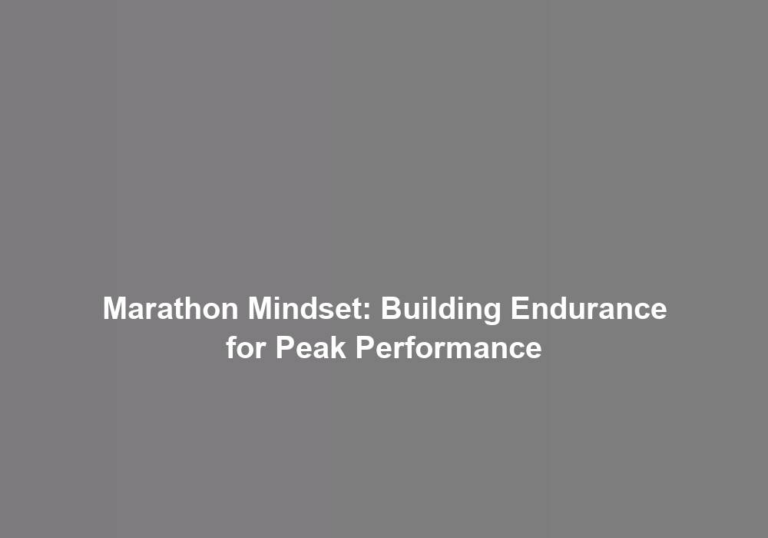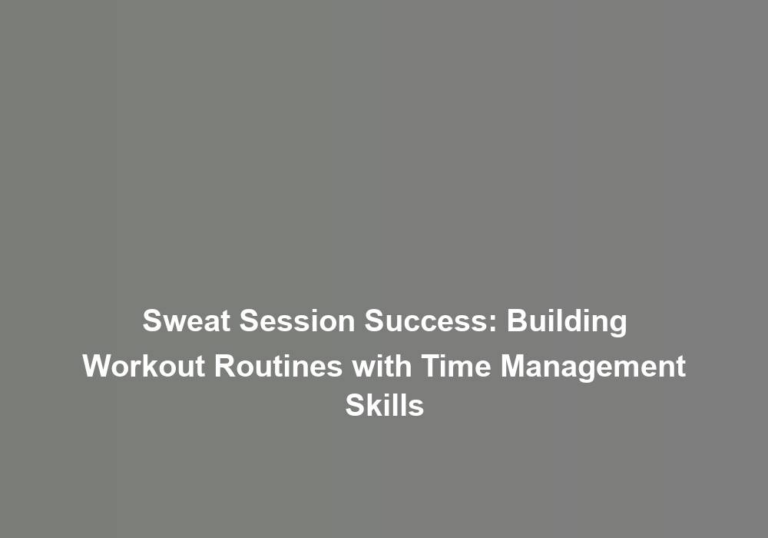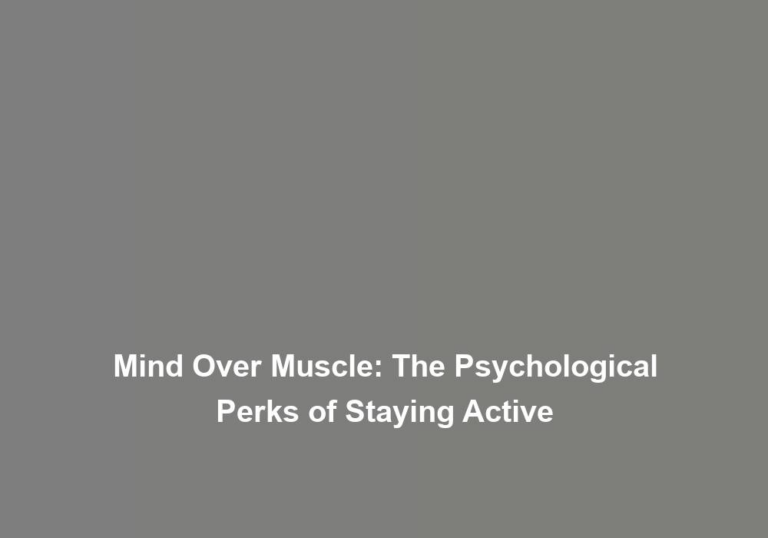Anatomical Alarms: Scheduling Your Workouts with Precision and Science
Imagine your body as a finely tuned instrument, each system working in harmony to keep you running smoothly. Now, picture being able to tap into the precise timing of your bodyG??s internal rhythms to optimize your workouts for maximum efficiency. This is the world of anatomical alarms, where scheduling your workouts with precision and science can take your fitness to a whole new level. But how exactly does this work, and what can it mean for your exercise routine? YouG??re about to discover the fascinating intersection of biology and fitness, where understanding the intricate dance of your bodyG??s natural cycles can revolutionize the way you approach your workouts.
The Science Behind Anatomical Alarms
When setting anatomical alarms for your workouts, precision is key to optimizing your training schedule. Anatomical alerts, also known as biological timing, play a crucial role in determining the most effective times for exercise. Your body follows a natural rhythm, and understanding this rhythm is essential for exercise synchronization and physiological scheduling.
Biological timing refers to the bodyG??s internal clock, which regulates various physiological processes. These processes include hormone levels, body temperature, and metabolism, all of which influence your readiness for physical activity. By aligning your workouts with your bodyG??s natural rhythms, you can maximize the effectiveness of your training and minimize the risk of injury.
Exercise synchronization involves coordinating your workouts with your bodyG??s peak performance periods. For example, if youG??re an early bird, your anatomical alarms might be best set for morning workouts when your energy levels and strength tend to be at their highest. Alternatively, if youG??re a night owl, scheduling your workouts for the evening might yield better results. Understanding your bodyG??s biological timing can help you make the most of your exercise routine.
Physiological scheduling involves creating a workout plan that accounts for your bodyG??s natural fluctuations in strength, flexibility, and endurance throughout the day. By recognizing when your body is most primed for physical activity, you can optimize your training schedule to achieve better results and enhance your overall well-being. Paying attention to anatomical alerts and biological timing can provide a sense of belonging to your bodyG??s natural rhythm, helping you feel more connected and in tune with your workouts.
Understanding Your Circadian Rhythms
Understanding your circadian rhythms is crucial when it comes to scheduling your workouts for optimal performance. Your bodyG??s internal clock plays a significant role in determining your energy levels, strength, and flexibility throughout the day. By grasping the basics of circadian rhythms and their impact on your workouts, you can tailor your exercise routine to align with your bodyG??s natural ebbs and flows.
Circadian Rhythm Basics
Discover how your bodyG??s natural clock influences your energy levels and performance throughout the day. Your circadian rhythm, also known as your biological clock, regulates your sleep patterns and productivity. ItG??s like an internal alarm that tells your body when to feel alert and when to wind down. Understanding your circadian rhythm can help you optimize your daily schedule, allowing you to plan your workouts and tasks when your energy levels are at their peak. For most people, energy levels tend to peak in the late morning and early evening. By aligning your activities with your natural rhythm, you can enhance your performance and productivity. Being in tune with your bodyG??s natural clock can lead to a sense of belonging and harmony, as you work with, rather than against, your internal rhythms.
Impact on Workouts
Your circadian rhythm not only influences your sleep patterns and productivity but also has a significant impact on the effectiveness of your workouts. Understanding your bodyG??s internal clock can help optimize workout efficiency and time management. Research shows that physical performance and energy levels fluctuate throughout the day in alignment with your circadian rhythm. For instance, late afternoon or early evening may be the best time for high-intensity workouts when your body temperature is at its peak, resulting in improved performance and reduced risk of injury. On the other hand, early morning workouts may enhance your metabolism and kickstart your energy levels for the day. By aligning your workout schedule with your circadian rhythm, you can maximize the benefits of your efforts and achieve better results in the long run.
Optimizing Exercise Timing for Performance
When is the best time to schedule your workout for optimal performance? Understanding the impact of anatomical alarms and hormonal fluctuations is crucial for precision scheduling. Your bodyG??s internal clock, known as the circadian rhythm, plays a significant role in exercise performance. Hormonal fluctuations, such as cortisol and testosterone levels, vary throughout the day and can affect your strength, endurance, and overall performance during workouts.
Research suggests that late afternoon to early evening might be the ideal time for most people to exercise due to the bodyG??s increased muscle strength and lung function, along with higher body temperature and flexibility. This timeframe aligns with the peak of your circadian rhythm, creating a favorable environment for improved exercise performance. However, individual variances exist, so itG??s essential to listen to your body and understand its unique responses to different times of the day.
Incorporating high-intensity workouts during this period may lead to better results due to the bodyG??s improved anaerobic capacity and muscle function. Additionally, coordinating your meals and hydration with your workout schedule can further enhance your performance. Ensuring that your body is adequately fueled and hydrated during the hours leading up to your workout can positively impact your energy levels and overall endurance.
Ultimately, optimizing exercise timing for performance involves paying attention to your bodyG??s signals and finding the schedule that best suits your individual physiological rhythms. By doing so, you can maximize the benefits of your workouts and achieve greater satisfaction and belonging in your fitness journey.
Tailoring Workouts to Hormonal Fluctuations
Understanding the impact of hormonal fluctuations on exercise performance, particularly the variations in cortisol and testosterone levels, is essential for tailoring workouts to maximize results. Your bodyG??s hormonal balance plays a crucial role in determining the effectiveness of your workouts. By aligning your exercise routine with your hormonal fluctuations, you can optimize your training to work with your body, rather than against it.
When cortisol levels are high, typically in the morning, your body is in a catabolic state, meaning itG??s breaking down tissue for energy. This makes high-intensity workouts less effective during this time. Focusing on low-impact exercises, such as yoga or walking, can be more beneficial during these periods. As cortisol levels decrease throughout the day, your body becomes more receptive to strength and endurance training. This is the perfect time to schedule your more intense workouts, as your body is in an anabolic state, promoting muscle growth and repair.
On the other hand, testosterone levels are usually higher in the morning, making it an ideal time for strength training and high-intensity workouts. As the day progresses, testosterone levels decline, so adjusting your workout intensity accordingly can help you achieve better results. By tailoring your workouts to your hormonal fluctuations, you can work in harmony with your bodyG??s natural rhythms, maximizing the effectiveness of your exercise routine and ultimately achieving your fitness goals.
Implementing Precision With Chronobiology
You know, timing your workouts according to your bodyG??s circadian rhythms can make a significant difference in your performance and results. Understanding how your bodyG??s internal clock affects your energy levels and metabolism can help you optimize your exercise schedule for maximum efficiency. By implementing precision with chronobiology, you can tailor your workouts to align with your bodyG??s natural rhythms and achieve better fitness outcomes.
Timing and Circadian Rhythms
With precision and science, timing your workouts to align with your bodyG??s natural circadian rhythms can optimize performance and results. When you synchronize your exercise routine with your circadian rhythm, you can experience improved sleep quality, which is essential for overall well-being and muscle recovery. This alignment can also enhance your energy levels, as youG??re working out when your body is naturally at its peak performance. By understanding your circadian rhythm and scheduling your workouts accordingly, you can feel more connected to your bodyG??s natural patterns and achieve a sense of harmony and balance in your fitness journey. This approach not only maximizes the effectiveness of your workouts but also fosters a deeper sense of belonging to your own physical experience.
- Discovering the impact of circadian rhythm synchronization on your workout routine
- Exploring the correlation between workout timing and sleep quality
- Unleashing the potential for peak performance and heightened energy levels
Optimal Exercise Schedules
Aligning your exercise schedule with your bodyG??s natural rhythms can optimize your workouts and overall physical performance. To help you customize your exercise routine, itG??s important to understand your bodyG??s performance peaks throughout the day. By scheduling your workouts during these peak times, you can maximize your efforts and achieve better results. Below is a table outlining the general performance peaks for different types of exercises, allowing you to tailor your workouts for optimal effectiveness.
| Time of Day | Cardiovascular Exercise | Strength Training | Flexibility Work |
|---|---|---|---|
| Morning | Moderate to High | Moderate | Low to Moderate |
| Afternoon | Low to Moderate | High | Low to Moderate |
| Evening | Moderate | Moderate | Moderate |
Understanding these patterns can help you plan your workouts to align with your bodyG??s natural rhythms, leading to more effective and rewarding exercise sessions.
Practical Tips for Scheduling Your Workouts
To optimize your fitness routine, consider incorporating your workouts into your daily schedule with careful consideration and precision. By doing so, you can ensure that you make the most of your time and energy levels, leading to more effective and enjoyable workouts. Here are some practical tips for scheduling your workouts:
-
Time Management
-
Plan your workouts for times when you are least likely to be interrupted or distracted, such as early in the morning or late in the evening.
-
Use calendar apps or fitness tracking tools to schedule your workouts in advance and set reminders to help you stay on track.
-
Consider breaking up your workout sessions throughout the day if you have a busy schedule, for example, doing a quick workout during your lunch break.
-
Energy Levels
-
Pay attention to your natural energy peaks and valleys throughout the day and schedule your workouts during times when you feel most energized.
-
If you struggle with low energy in the morning, opt for evening workouts, and vice versa.
-
Experiment with different workout times to determine when you feel strongest and most motivated.
Conclusion
Now that you understand the science behind anatomical alarms, you can optimize your workouts by scheduling them with precision. By considering your circadian rhythms and hormonal fluctuations, you can tailor your exercise timing for maximum performance. With the implementation of chronobiology, you can take your workouts to the next level. Use these practical tips to schedule your workouts and see the difference in your fitness journey. The truth is, science can truly revolutionize your approach to exercise.







